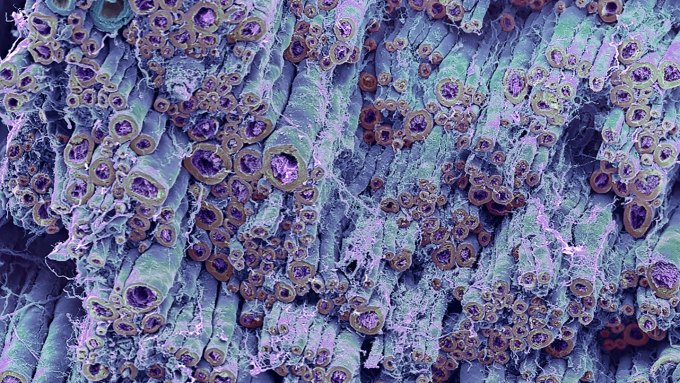Ancient viruses have left an indelible mark on the evolution of life on Earth, and their influence extends even to the intricate workings of our nervous systems. A recent study published in Cell on February 15 reveals the fascinating role of a retrovirus, nestled within the DNA of jawed vertebrates, in the development of a crucial protein necessary for the insulation of nerve fibers.
This discovery sheds light on the evolutionary process that enabled the emergence of swift neural transmission and complex cognitive abilities in vertebrates.
The remarkable aspect of this revelation lies in the fact that this viral contribution occurred independently multiple times across different lineages of jawed animals. It underscores the profound and often unexpected ways in which genetic material from ancient viral infections has been co-opted by host organisms for beneficial purposes over the course of evolution.
The protein facilitated by the viral DNA is instrumental in the formation of myelin, a fatty substance that wraps around nerve fibers, serving as insulation and enhancing the speed at which electrical impulses travel along neurons. This acceleration of neural transmission is fundamental to the rapid processing of information and the intricate signaling required for complex cognitive functions.
By elucidating the role of this retrovirus in the production of myelin, researchers have provided compelling evidence for its pivotal role in the evolution of nervous systems. The presence of myelin sheaths around nerve fibers is a defining characteristic of vertebrates, and its optimization through the assistance of ancient viral DNA likely conferred a significant evolutionary advantage.
The evolutionary arms race between hosts and viruses has often been portrayed as a battle for survival, with viruses seen solely as agents of disease and destruction. However, this study exemplifies the intricate dance of coevolution, where elements of the viral genome become integrated into the host’s genetic repertoire, sometimes leading to innovations that drive evolutionary progress.
Moreover, this discovery underscores the interconnectedness of life on Earth, highlighting how the legacy of ancient viral infections continues to shape the biological landscape millions of years later. Far from being mere genetic parasites, viruses have contributed in profound ways to the genetic diversity and complexity of organisms, leaving an enduring imprint on the evolutionary trajectory of life.
As we delve deeper into the molecular mechanisms underlying biological processes, we continue to uncover the hidden roles of ancient viruses in shaping the marvels of life that surround us. From the development of essential proteins to the evolution of complex organs and systems, these insights remind us of the intricate tapestry of life, woven together by the threads of ancient viral encounters.






